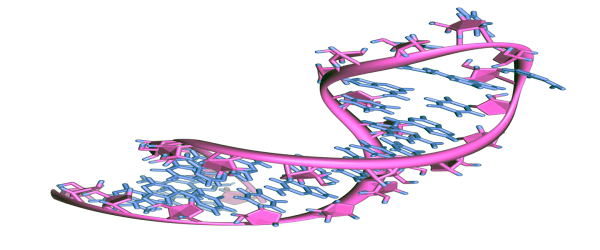The Boom method, or Boom nucleic acid extraction method, is a solid phase extraction technique for isolating nucleic acids from a solution of biological matter. This is just a fancy way of saying you use this technique to expose and remove the nucleic acids from a cell. First developed by William R. Boom, the Boom method makes use of silica-coated magnetic beads (SiO2) that bind nucleic acids. Key to this process is the use of a chaotropic agent. This method is reliable and ideally suited to the rapid isolation of nucleic acids on a small scale.
A procedure that is very simple and straightforward- words of joy to a scientist’s ears!
Step 1: Getting your ingredients ready.
The sample needs to be processed to allow for the release of the nucleic acids into the solution. Depending on what you’re extracting the nucleic acids from (for example, tissue), you may first need to homogenize your sample. Next, the cells must be lysed, using a special type of lysis buffer called a chaotropic agent (see below). The biological sample is pipetted into your reaction vessel containing the silica beads and the chaotropic agent. You now have your starting material.
Step 2: The formation of the silica bead-nucleic acid bonds.
Next is the separation phase. Bursting open the cells results in the exposure of the nucleic acids. These will bind to the silica beads. The sample is centrifuged to capture these nucleic acid-silica bead complexes in a pellet.
Step 3: Taking out the trash.
To remove all the cellular debris and any other contaminants the pellet is repeatedly washed: re-suspending it and then re-centrifuging it. Then, the sample is allowed to dry.
Step 4: Isolating the nucleic acids.
The nucleic acids are isolated from the beads by decreasing the concentration of chaotropic agent, flushing the nucleic acids into an elution buffer.
Different solutions may be used to isolate specific nucleic acids, from long double strands of DNA, to short single strands of RNA, to circular nucleic acids. The starting material can be from a number of different sources: from cell cultures, to tissue samples, to bodily secretions and excretion, and fluids, to food— pretty cool!
Now, let’s look more closely at how the chaotropic agent not only acts as a lysis buffer but also allows the silica to bind the nucleic acids.
The Chaotropic Agent
The definition of a chaotropic agent is a substance capable of changing the quaternary, tertiary and/or secondary structure of a protein or nucleic acid without damaging the primary structure. The agent is composed of a salt (anion) dissolved in an aqueous solution. The original Boom method made use of guanidinium thiocyanate salts but other anions may also be used, such as Bromine, Acetate, and Nitrate ions.
Warning! The mechanism of action of this method sounds like a B-rated teen movie!
When thinking about the chaotopic agent, it’s helpful to look closely at the name- chaotopic, like chaos. I picture it on a molecular level as a very suave gentleman acting as his best friend’s wingman. The best friend here is the silica beads. The suave agent hears his best friend talking about this lady he is totally smitten with, the beautiful nucleic acid. She doesn’t even notice him because she is dating a water molecule and the two are inseparable. Now the suave agent feels sorry for his friend and decided he is going to use his charms to convince the nucleic acid to break her non-covalent bond with the water molecule.
The suave agent realizes that to separate the water molecule and the nucleic acid, he must target the phosphate group that forms the connection between them and this is exactly what he does! He convinces the nucleic acid that the water isn’t her type at all making her totally hydrophobic. The nucleic acid (specifically, the now exposed phosphate group) is alone and spots the silica bead standing with open arms. The silica bead sees its opportunity and jumps in with sympathy and chocolate resulting in a new-found bond between the silica bead and the nucleic acid. This goes go quite happily and the other party guests leave (you wash all the debris out) and so the chaotropic agent starts saying goodbye (we decrease its concentration). As soon as the chaotropic agent starts to leave, the nucleic acid starts to come to its senses again, becoming more and more hydrophilic. What has she done! She sees her beloved water molecule rushing by in the elution buffer and breaks her bond with the silica. She clings onto the water molecule and they reform their non-covalent bond.
Chemistry is so cheesy!





